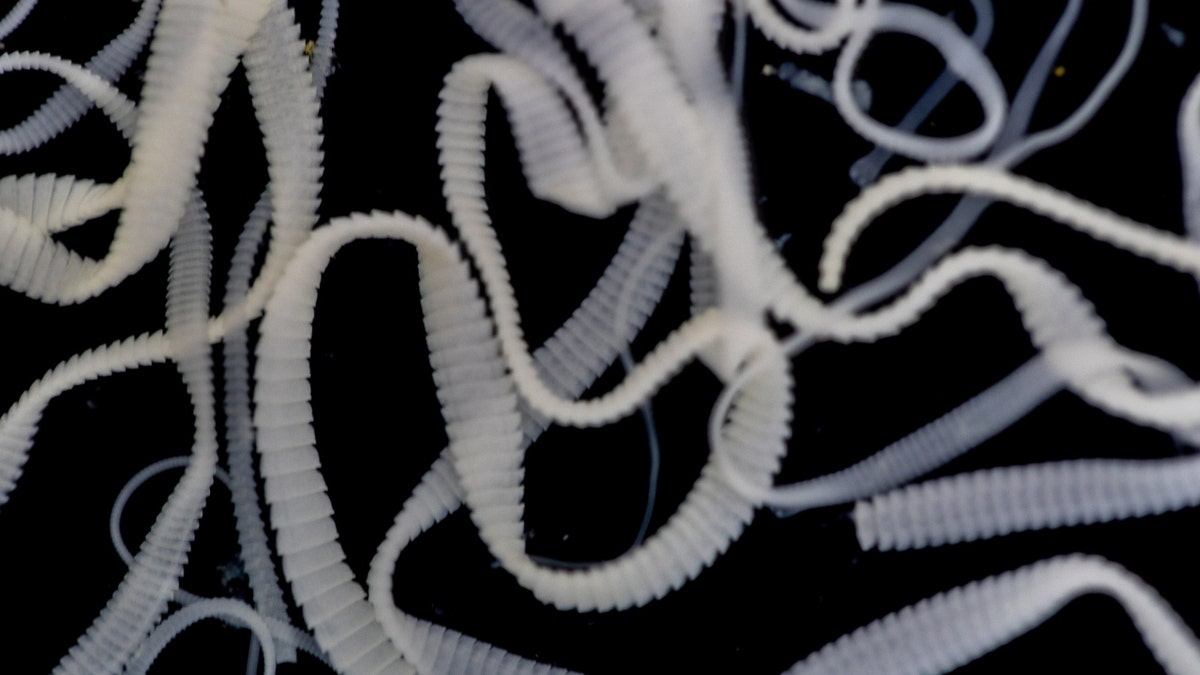A man suffering from severe migraines, obesity and complicated type-2 diabetes was found to have parasitic tapeworm larvae in his brain, which was the result of eating partially cooked bacon, according to a report published by the American Journal of Case Reports last week.
The 52-year-old man had a medical history of chronic migraines, type-2 diabetes mellitus which was complicated by peripheral neuropathy, hyperlipidemia and obesity.
The study noted that the man told doctors his migraines occurred almost weekly and were not responsive to medication. He also said he did not travel to high-risk areas, lived at home with his wife and cat, and preferred lightly cooked, non-crispy bacon, which he admitted having eaten most of his life.
The man underwent numerous tests, including a CT scan, which uncovered multiple cysts in his brain. But there was no evidence of hydrocephalus, or buildup of fluid.
ACTRESS OLIVIA MUNN CREDITS BREAST CANCER RISK-ASSESSMENT SCORE FOR SAVING HER LIFE
An illustration of a tapeworm (Credit: iStock)
Doctors also conducted an MRI which demonstrated the same findings as the CT, but also noted there was concern about neurocysticercosis.
“Cysticercosis is a condition caused by infection with the larval form of Taenia Solium, a pork tapeworm that uses pigs as an intermediate host,” the study read. “Humans become infected when they ingest water or food contaminated with tapeworm cysts.”
The man underwent more tests to find out more on a correlation between the migraines and Cysticercosis, involving blood and urine cultures and HIV antibodies, though all came back nonreactive.
MAN SHOCKED TO DISCOVER SOURCE OF HEADACHES FOR 5 MONTHS IS PAIR OF CHOPSTICKS INSIDE HIS SKULL
But when the Cysticercosis lgG Cysts antibody came back with a positive result, doctors were able to confirm the suspicion of neurocysticercosis.

Researchers said the man’s “preference for soft bacon” could have led to him developing an intestinal tapeworm.
They then put him under a regime of medications, and after 14 days, he was determined to be successfully treated.
Researchers said the man’s “lifelong preference for soft bacon” could have led to him developing an intestinal tapeworm and not cysticercosis.
“Taeniasis occurs when consuming undercooked pork and the larval cysts embedded within, while cysticercosis is contracted when humans ingest eggs found in the feces of other humans with taeniasis,” researchers wrote.
ALABAMA WOMAN WITH TWO UTERUSES IS PREGNANT WITH TWINS, ONE IN EACH WOMB: ‘1 IN 50 MILLION’ CHANCE
“It can only be speculated, but given our patient’s predilection for undercooked pork and benign exposure history, we favor that his cysticercosis was transmitted via autoinfection after improper handwashing after he had contracted taeniasis himself from his eating habits.”

A man who consumed partially cooked bacon was found to have tapeworm larvae in his brain, causing him to suffer from severe migraines. (Steve Doocy)
The Centers for Disease Control and Prevention warns that if a person consumes undercooked and infected pork, then gets tapeworm infection in the intestines, that person will pass the eggs in their feces.
Cysticercosis typically occurs in low-income countries, the CDC noted, though people who have never traveled outside the U.S. could still contract it.
CLICK HERE TO SIGN UP FOR OUR HEALTH NEWSLETTER
“A person infected with a tapeworm who does not wash his or her hands might accidentally contaminate food with tapeworm eggs while preparing it for others,” the CDC said.
CLICK HERE TO GET THE FOX NEWS APP
After entering the body, the eggs hatch and the larvae sometimes attach to the brain.
Symptoms of cysticercosis include headache, epilepsy, dizziness and stroke.

